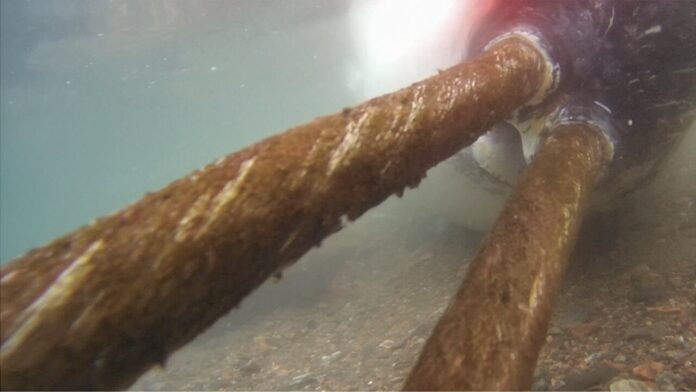Underwater microphones, known as hydrophones, are essential tools for scientists studying marine animals. Passive acoustic monitoring allows researchers to listen in on whale calls, clicks, and other underwater sounds without disturbing the creatures themselves. This approach is vital for understanding animal behavior, tracking biodiversity, and mitigating the impacts of human noise pollution in the oceans.
But a new study reveals that narwhals, the iconic Arctic whales known for their spiraled tusks, might not be as oblivious to these recording devices as previously thought. Over two years, researchers deployed three hydrophones in Inglefield Bredning Fjord, northwest Greenland. Their goal was to passively monitor narwhal behavior and soundscapes.
Instead of remaining undisturbed bystanders, the narwhals repeatedly interacted with the hydrophones, prompting a surprising discovery: these unique whales seem downright fascinated by them. Researchers recorded 247 instances of narwhals bumping, rubbing, and even seeming to “scan” the devices. Considering the recording equipment wasn’t constantly running, they estimated the true number of hits could be as high as 613 during the two months when narwhals frequented the area. That’s an average of more than 10 encounters per day.
“Our results suggest that narwhals repeatedly dived to visit the moorings out of playful curiosity or, more likely, due to confusion with potential prey,” says Dr. Evgeny A. Podolskiy, lead author of the study published in Communications Biology.
What’s Behind the Narwhal Behavior?
The researchers examined the stomach contents of 16 narwhals caught by local Inughuit hunters during the same period. The diet primarily consisted of cod, with smaller amounts of shrimp and squid – plus an interesting addition: stones. This dietary fact, combined with the hydrophone interactions, led to a possible explanation.
“Narwhals might confuse the recording devices for cod or halibut near the seafloor,” Dr. Podolskiy explains. While echolocation allows these whales to distinguish subtle differences in texture and density, it’s still possible that the artificial shapes and sounds emitted by hydrophones triggered a feeding response. The recorded “rubbing” sounds after hits may indicate narwhals attempting to scrape or manipulate the devices further.
More Than Just Curiosity: Impacts on Research and Conservation
This unexpected interaction raises important questions about the supposedly non-invasive nature of passive acoustic monitoring. While valuable for understanding marine ecosystems, these recording devices might not be as neutral as previously assumed.
The study highlights that artificial objects in the underwater environment can influence animal behavior – particularly for creatures like narwhals known to be highly adaptable and curious. Shortening mooring lines attached to hydrophones could be a simple but effective way to minimize unintentional disturbance while still allowing valuable research to continue.
Protecting vulnerable species, such as narwhals, requires careful consideration of all potential impacts from our monitoring efforts. Understanding how creatures like these react to human technology is crucial for ensuring both the accuracy of scientific data and the long-term wellbeing of marine life.







































































